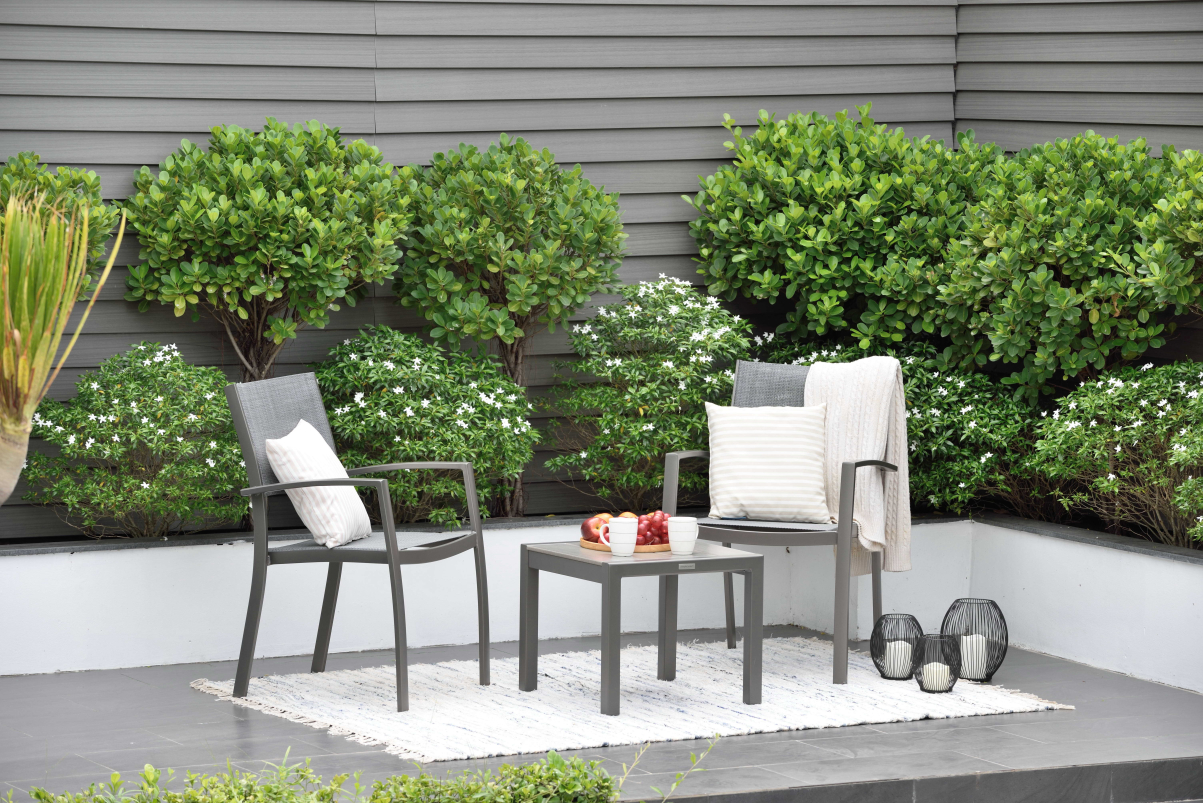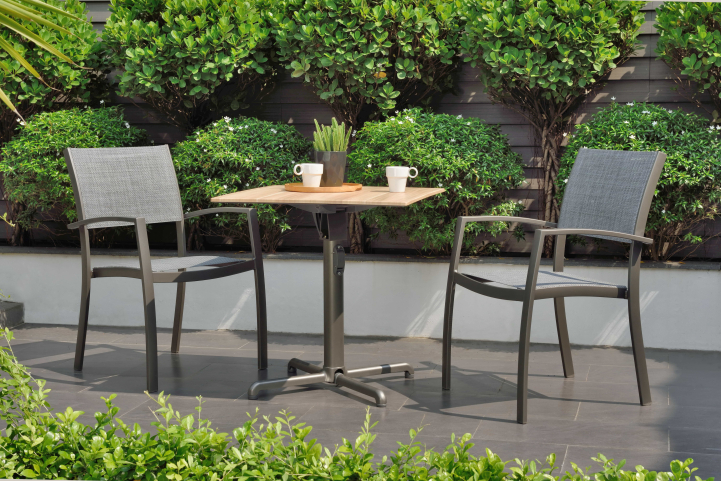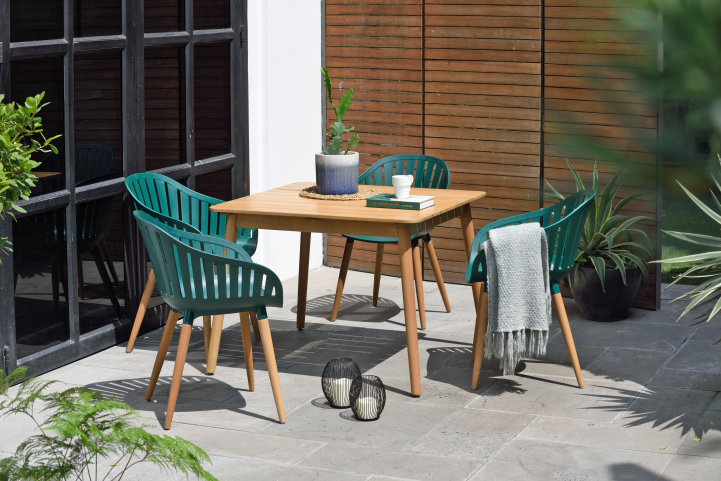
You don’t need to have the biggest outdoor space to create a safe haven for some of nature’s most important little creatures. There are plenty of things you can do to welcome wildlife into your garden or balcony, helping native fauna thrive, whilst giving you something beautiful to look at the same time.
Get friendly with your planting
By growing plants that pollinators love, you will have wildlife flocking to your outdoor plot. We all understand how vital it is to support our declining bee population but did you know that all pollinators are incredibly important for the health of our planet? Without them, plants couldn’t reproduce; and that includes food crops, which these helpful wild insects pollinate for free. Just to give you an idea of scale, 35% of food crop production worldwide depends on animal pollinators, including honey bees. There are thousands of species of pollinator – from bees, wasps and butterflies, to moths, hoverflies, and beetles – and, we need that diverse population for pollination to work effectively. So, get out and plant a feast for our winged friends; ideally with a mix of flowers that bloom at different times throughout the year. Primrose is perfect for spring, whilst lavender and buddleia will have bees and butterflies going crazy in the summer months, followed by ivy or hyssop in the autumn. It will give you a stunning view and also serve up a healthy portion of pollen for flying visitors. In fact, scented plants like honeysuckle, come to life at night and start expelling their perfume in the evening to attract nocturnal moths Visit the Wildlife Trusts or RHS for a comprehensive list of pollinator-friendly plants and some inspiration for your flower beds, containers, and even window boxes.

Let it grow
People have become obsessed with perfectly-manicured lawns and expertly-trimmed greenery but there’s no need to go overboard. Why not leave the lawn to grow a bit longer in between cuts or leave some plants and bushes to overgrow a little bit? Some of us might like the look of neat, tidy garden but mini beasts and birds prefer something a bit more unruly.

Leaving your lawn to grow is a huge help to insect wildlife, which can hide in the mini jungle created by longer grass. If there are wildflowers in there too, even better for those helpful pollinators. If a longer lawn isn’t practical for you, then why not just re-wild an area by leaving the grass to grow in a corner or strip along one side. You could even create your own insect highway. Get the kids involved and teach them how important it is to help the wildlife in our gardens. They can even go on a hunt and explore the minibeasts that have made your garden a home.
Equally, try not to get too heavy-handed with the pruning this spring, as many wild birds like to have some foliage surrounding their nests to make them feel more hidden and secure. And, if there’s a particular plant outdoors that attracts a lot of bees or butterflies then let it grow. Bees need all the pollen they can get to keep their hives healthy and full.
We’re absolutely giving you permission to put your feet up and take a step back from relentless gardening in the name of nature!
Supply snacks
Food is fairly plentiful during the spring and summer months, however, it’s still worth making sure there are plenty of calories available to keep our feathered friends nice and plump.

According to the RSPB, during the summer months, birds require high-protein foods, especially while they are moulting. Therefore it is advised to only offer selected foods at this time of year, including black sunflower seeds, pinhead oatmeal, soaked sultanas, raisins and currants, mild grated cheese, mealworms, waxworms, mixes for insectivorous birds, good seed mixtures (without loose peanuts, as these can choke chicks). You can also put out soft apples and pears, cut in half, or bananas and grapes.
It’s wise to avoid peanuts, fat and bread during spring and summer months, as they can be harmful if adult birds feed them to their nestlings. Homemade fat balls can also go rancid in warm summer weather, so hold off on making those until the weather gets cooler.
The RSPB explains that temporary food shortages can occur unexpectedly at almost any time of the year and, if this happens during the breeding season, the extra food on your bird table or ground feeder can make a huge difference to the survival of the young. A cold or wet spring/summer can result in a severe shortage of insect food, whilst an exceptionally dry season can mean ground-feeding birds can’t penetrate hard soil to reach earthworms. To help prevent starvation during these times, you can put out mealworms and buggy nibbles.
Take the plunge
A pond is a fantastic way to attract wildlife into your outdoor area and, hey, it means you can technically boast you have a water feature in your garden! A carefully created pond of any size will do wonders to support nature by giving thirsty animals a handy source of water, a place to cool off and can create an ideal breeding space or habitat for creatures including dragonflies, mayflies, pond skaters, frogs and newts.
Obviously, the larger the pond, the most wildlife you can expect to see but that doesn’t mean you can’t still work wonders with something smaller. The RHS has provided this easy step-by-step guide on how to build your very own pond at home. A great tip is to repurpose an old container and create a wildlife-friendly pond in a pot; perfect if you have a balcony or roof terrace!
… and enjoy
As well as helping all creatures, great and small, there is another upside to making your outdoor space a haven for wildlife, and that is that you get to sit and enjoy watching the wonders of nature around you. Whether you’re surveilling the birds’ feeding frenzy, sitting back and listening to the buzzing of busy bees and other insects going to work, or staying up late to try and catch a glimpse of night-time visitors and enjoying the fragrant plants in your garden, you need somewhere stylish and comfortable to kick back and relish all the mowing and pruning you are NOT doing.
By choosing a sustainable furniture set from LifestyleGarden®, you can do even more for the environment. These chic collections of garden patio furniture, bistro sets, sofa sets, and balcony furniture are all manufactured to have minimal impact on the planet, from the sustainable sourcing of raw and recycled materials, to the recyclability of products at the end of their life.

By taking home a recycled plastic furniture set, like DuraOcean®, you will be helping secure the future of wildlife much farther afield than your garden. This elegant contemporary furniture range is made using recycled marine waste, helping to clear the oceans of plastic pollution, whilst delivering you somewhere stunning to sit at the same time.
